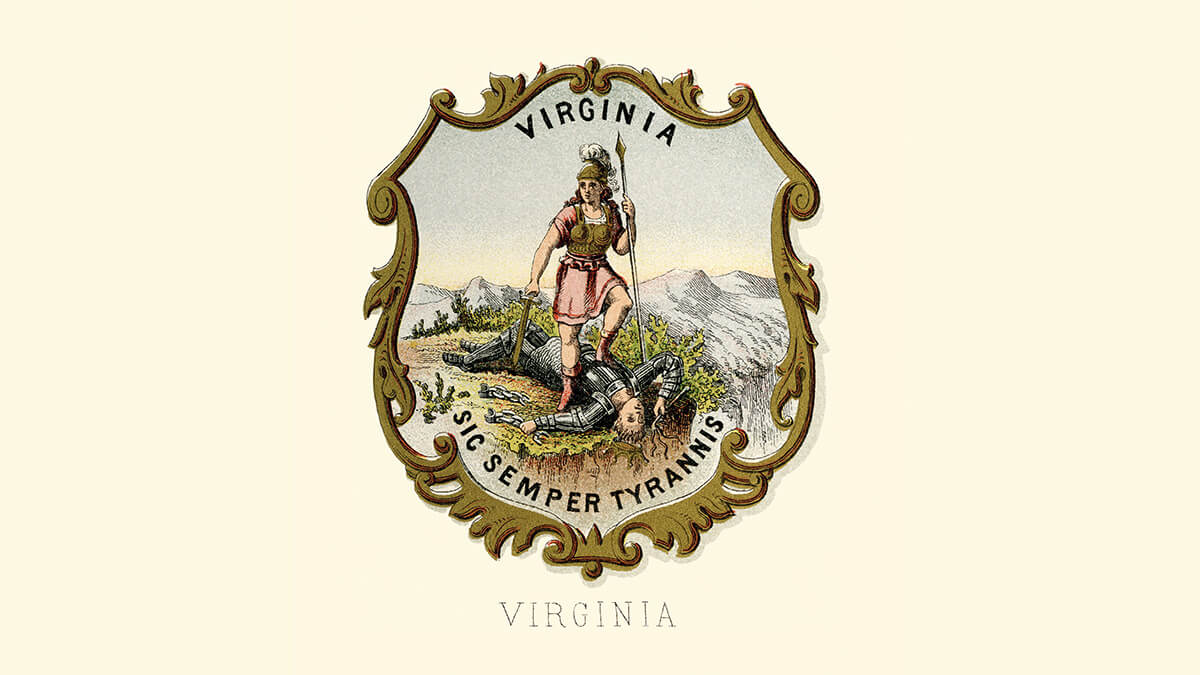Composition
The Virginia flag features a field of deep blue charged with the seal of the commonwealth on a circle of white, centered.

The flag of the Commonwealth of Virginia follows a common pattern for U.S. state flags, featuring its seal on a field of blue.
The seal was primarily designed by George Wythe as part of a committee also including George Mason, Richard Henry Lee, and Robert Carter Nicholas Sr.
It borrows heavily from Roman mythological imagery and is the only U.S. flag to show nudity.
The flag was officially adopted April 30, 1861.
The Virginia flag features a field of deep blue charged with the seal of the commonwealth on a circle of white, centered.

Roman goddess Virtus, peace, victory over tyranny
freedom from tyranny
red and green Virginia creeper, regional flora
Thus Always to Tyrants, a warning to oppressors of defeat
Since the coat of arms and seal were created in the 1770s, many versions came about, though each still representing Virtus victorious over Tyranny. To achieve consistency, the seal (and the flag) were standardized in the 1950s.

The prominent colors are a deep blue and white, with supporting colors within the seal like red and green, the colors of Virginia creeper.
The purple robe worn by the tyrant references Julius Caesar.
Virginia law doesn’t specify dimensions for the flag. It is usually produced with a proportion of 2:3.
The flag should be made of silk, nylon, or similar material and can be trimmed with fringe on three sides measuring 2.5 inches wide.
